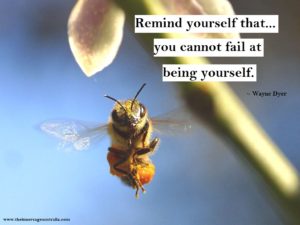Right now there is so much discussion, and guidelines, on how to flatten the curve. It is just as important that we give the same consideration to flattening the emotional curve.
One of the main reasons it is important to flatten the emotion curve is due to the impact our emotions have on our health. Neuroscientist Candace Pert explains in her book, Molecules of Emotion, “As our feelings change, this mixture of peptides travels throughout your body and your brain. And they’re literally changing the chemistry of every cell in your body.”
Our cells are fundamental building blocks of our physical being. It is at this level where our health and well-being is determined. It is said that 95% of dis-ease is stress related. If our cells are flooded with negativity, negative chemistry will result. Impacting your cells from performing optimally.
As described by Hockenbury & Hockenbury, “An emotion is a complex psychological state that involves three distinct components: a subjective experience, a physiological response, and a behavioural or expressive response.”
This means what you are fundamentally in charge of your emotional curve. What you are feeling is right for you. Based on what you have decided something to mean for you. Now I’m not saying that what you are thinking is necessarily correct, your perception will be your reality.
Most people deny how they are feeling, especially when it is typically considered to be negative. Yet when you deny, repress or do not allow an emotion you create a neurological block. A block not only to that negative emotion yet also to the equally opposite positive one.
Typically considered negative emotions, used correctly are healthy, as long as you don’t allow them to fester and spiral into them. There is a big difference in acknowledging how you are feeling and spiralling into that feeling.
Dissolving emotions
First step in flattening the emotional curve is to acknowledging how you feel and give yourself permission to feel that way. For example it is okay to be angry as long as you don’t spiral down (or out of control) with your anger
The next step is to endeavour to understand the reason you are feeling that way. I’m a great believer in not needing the know the why in order to heal; however it can assist. So if you can’t work it out, that too is okay.
Then you need to ask yourself what is it you need to dissolve the negative emotion (or heighten a positive one). Making sure you following through on doing whatever it is you need.
Other tools to help flatten the emotional curve are:
Meditation
Meditation is the act of contemplation, reflection and/or prayer where you focus your mind with the intention of slowing down that thoughts will rise and choosing to not engage with these thoughts.
It is the process of be-ing; in that exact moment in time, free of busyness and distractions, not in the past and not in future, just present moment.
Like any new skill meditation can take time to master. So be compassionate with yourself when you start – it may you take you a few times before you are able to stop engaging with your thoughts.
To support your meditation process, try giving yourself another focus, such as your breath or music. A great breathing method for getting in to meditation is the 4-7-8 method. Breathe in for four, hold for seven and breathe out for eight. It helps relax you by shifting your from Sympathetic Nervous system (fight / flight response) to the Parasympathetic Nervous system (calm/composed state).
Another favourite suggestion for beginners is to light a candle and place your focus on the flame. Closing your eyes and then bringing the image of the flame into your mind. When your mind starts to wander open your eyes and focus on the physical flame, then closing your eyes again getting that image of the flame back in your minds eye. Continue doing so for the duration of the meditation.
Also start small…as in 5 or 10 minutes. Some is better than none.
Thymus Tapping
In Kinesiology we use thymus tapping to overall increase your energy levels as well as help energetically increase your capacity and ability to cope. In addition it is believed to energetically increase your immune system.
To do this tap on the centre of your chest where your sternum is and at the same time tap on the side of your body in alignment with where the crease of your arm naturally falls. Do this for approx. 30 seconds on one side and then 30 seconds on the other.
Focus of Concern / Focus of Influence
Stephen Covey in his book 7 Habits of Highly Effective People refers to the Circle of Influence v’s Circle of Concern. Essentially it is about where you are placing your focus. Are you focused on what is concerning you and getting bogged down by those concerns or are you focused on what action/s you can take to address what concerns you.
Focus of influence is about being empowered and proactive; to help you realise you have more power over things than you think.
Goals
Humans are teleological, which means we have a natural, inbuilt goal seeking drive. If we are not out seeking our own goals we tend to help and support others to seek theirs.
So having a goal, even if for the hour or day, sets your focus and intention on achieving something positive for yourself.
Journalling
James Pennebaker, a professor at the University of Texas undertook over forty years of research as to how journalling helped the individual to process significant emotional experiences. His researched demonstrated that by spending 20 minutes per day journalling participants experienced significant improvements physically and mentally.
They indicated they were happier, more cheerful and hopeful and calmer. Months after the journalling sessions their blood pressure had lowered, immune function impressed and overall felt healthier. They also indicated their relationships had improved, their memory was better and were having more successes at work.
Journalling / writing allows us to step out from the problem and see it from another perspective. Thus creating distance which can bring perspective about a situation.
Vitamin B & Iron
A scientific study from Japan found there is a significant correlation between panic/anxiety attacks and low levels of vitamin B6 and iron.
Serotonin, your body’s natural mood stabiliser and “happiness chemical”. It is synthesised in the body from the amino acid, tryptophan. For the synthesis of serotonin, vitamin B6 (Vit B6) and iron play important co-factors.
Thus increasing foods that are a source of tryptophan, Iron and Vitamin B could help improve your mindset. Foods that are a source of tryptophan are pumpkin seeds, turkey, grapefruit, tune, eggs, chia seeds, mozzarella sesame seeds and pistachios. Foods rich in Iron are spinach, red meat, lentils, cooked oysters, dark chocolate and white beans. Foods rich in Vitamin B6 are pork, turkey, fish, eggs, potato and bananas.
Protection
Just as you protect your physical body, it is important that we also protect and safeguard your energy fields in order to keep your energy clear of others energy and/or negative influences.
Energy which is not your own, especially when it is negative energy, can influence you resulting in stress, imbalance, mood swings, tiredness, lack of confidence, illness. Such energy can actually depletes your own energy leaving you without the vitality you need for general living.
Daily we interact with EMF’s – electromagnetic fields which we can’t see yet are received with us. Same too with energy. When you interact with people, or even when passing by strangers, your energy field connects or interacts with their energy field. This is why sometimes certain people can make you feel “off”.
Some of my favourite ways to protect my energy is essential oils such as Lavender or Frankincense, I also love the Resonate Essences Protection oil and I tend to use black tourmaline crystals to safeguard my energy fields.
If you found this helpful, be sure to head over to website for other articles full of tips and guidance.
Also if, after trying these techniques, you are still struggling with processing through your emotions then consider scheduling an appointment for kinesiology. You can book an appointment with me via: http://www.theinnersageaustralia.com/appointments/



 is similar to the four stages of learning. Which fundamentally teaches us that to be competence or perhaps confident there is a process we go through via learning and repetition.
is similar to the four stages of learning. Which fundamentally teaches us that to be competence or perhaps confident there is a process we go through via learning and repetition.
 negative. Rejection is symbolic of many positive things, such as: the need to love who you are; a sign that you are on the wrong path; an indication that you were settling for less than you deserve or that the universe holds for you.
negative. Rejection is symbolic of many positive things, such as: the need to love who you are; a sign that you are on the wrong path; an indication that you were settling for less than you deserve or that the universe holds for you. the world you are ready to be seen!
the world you are ready to be seen!